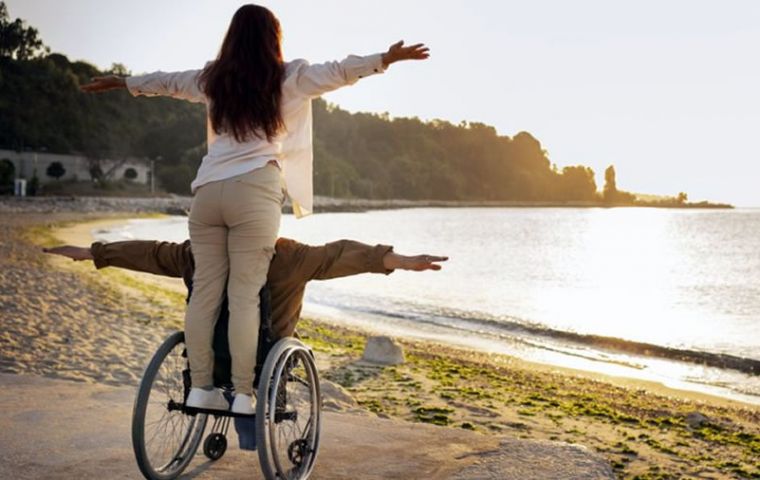MercoPress. South Atlantic News Agency
IBGE finds 8.9% of Brazilians have some form of disability
 “A woman with a disability is always in a worse situation,” researcher Luciana Santos said
“A woman with a disability is always in a worse situation,” researcher Luciana Santos said The Brazilian Institute of Geography and Statistics (IBGE) found through its People with Disabilities module of the Continuous National Household Sample Survey (Pnad Contínua) 2022 that about 18.6 million people aged two years or more (8.9% of this age group), had some form of disability, Agencia Brasil reported. Last year, 47.2% of people with disabilities were 60 years old or older, the study also detected.
The research proves that inequality is worsening among people with disabilities. In the third quarter of 2022, the illiteracy rate among people with disabilities was 19.5%, while among people without disabilities, this rate was 4.1%.
Only 25.6% of people with disabilities had completed at least high school, while 57.3% of people without disabilities reached this level of education. In terms of gender, the percentage of women with disabilities who complete the educational stage is 26.5%, higher than that of men (24.4%).
The IBGE also gathered information about the employability of the population with disabilities. In the comparison between men and women without disabilities in the job market, the participation rate is 25%, against 57% of women without disabilities. On the other hand, 76% of men without disabilities are part of the labor force, against 35% of those with some kind of disability.
Research analyst Luciana Santos notes that gender stereotypes are reinforced when there is this issue. “Women with disabilities are always at the bottom of the pyramid when we compare men with disabilities, women without disabilities, and men without disabilities. When we accumulate markers of inequality in society, the woman without disabilities has an advantage in the labor market in terms of remuneration and in terms of participation over the man with disability. A woman with a disability is always in a worse situation,” she said.
The average income of occupied people with disabilities was R$1,860, while the income of occupied people without disabilities was R$2,690.
Of those responsible for households nationwide, 12% have some form of disability.
The percentage of people of working age who are not looking for a job is 6%, higher than the 3.7% of people without disabilities.
The survey also found that the portion of students with disabilities in the series appropriate for their age is lower than among those without disabilities, in all school stages. The discrepancy is smaller in the first cycle of elementary school, with percentages of 89.3% and 93.9%. But it increases with time. In high school, for example, those with disabilities in the correct grade are 54.4%, while those without disabilities are 70.3%.
“This reflects an accumulation of students who are behind [in relation to the age-grade level]. There are issues about accessibility to the classroom, of [the school] having resources, being inclusive,” says researcher Maira Bonna Lenzi. According to her, it is necessary to understand what is hindering these students in school and in their appropriate grades. The illiteracy rate is five times higher than among those without disabilities (19.5% against 4.1%).
The disabilities were registered through interviews made by IBGE technicians, in which eight types of difficulties were considered: seeing, hearing, communicating, walking or climbing steps, lifting a two-liter bottle of water, picking up small objects (or opening and closing containers), learning (remembering and concentrating), and carrying out personal care tasks.
About 18.6 million people, or 8.9% of the Brazilian population aged two years or more, declared that they had some kind of disability. Among women, this figure is 10%. Among men, 7.7%. Among the Brazilian regions, the Northeast stood out, with 10.3%, the only one with a percentage diverging from the national average.
The most common disabilities reported are difficulties walking or climbing steps (3.6%), seeing (3.1%), and learning or remembering things (2.6%). About 5.5% of those interviewed declared that they had only one disability, while 3.4% said that they had two or more.
(Source: Agencia Brasil)




Top Comments
Disclaimer & comment rulesCommenting for this story is now closed.
If you have a Facebook account, become a fan and comment on our Facebook Page!